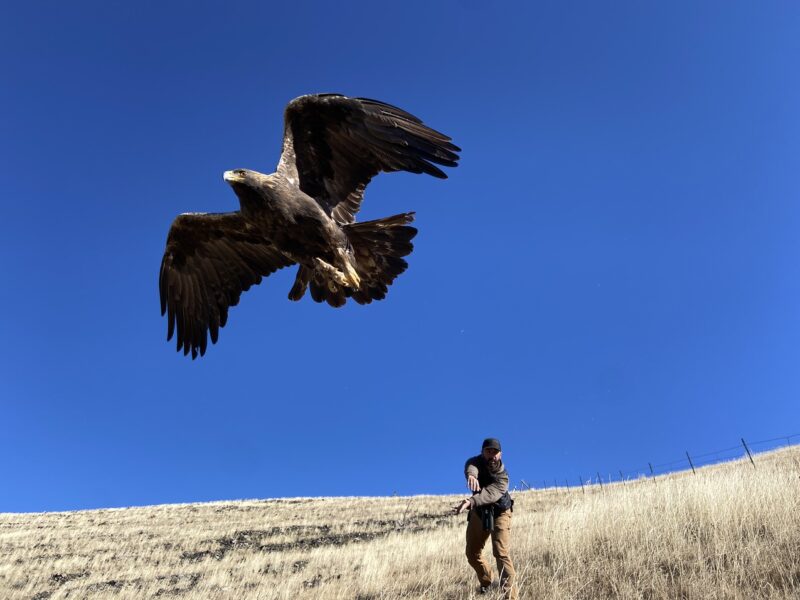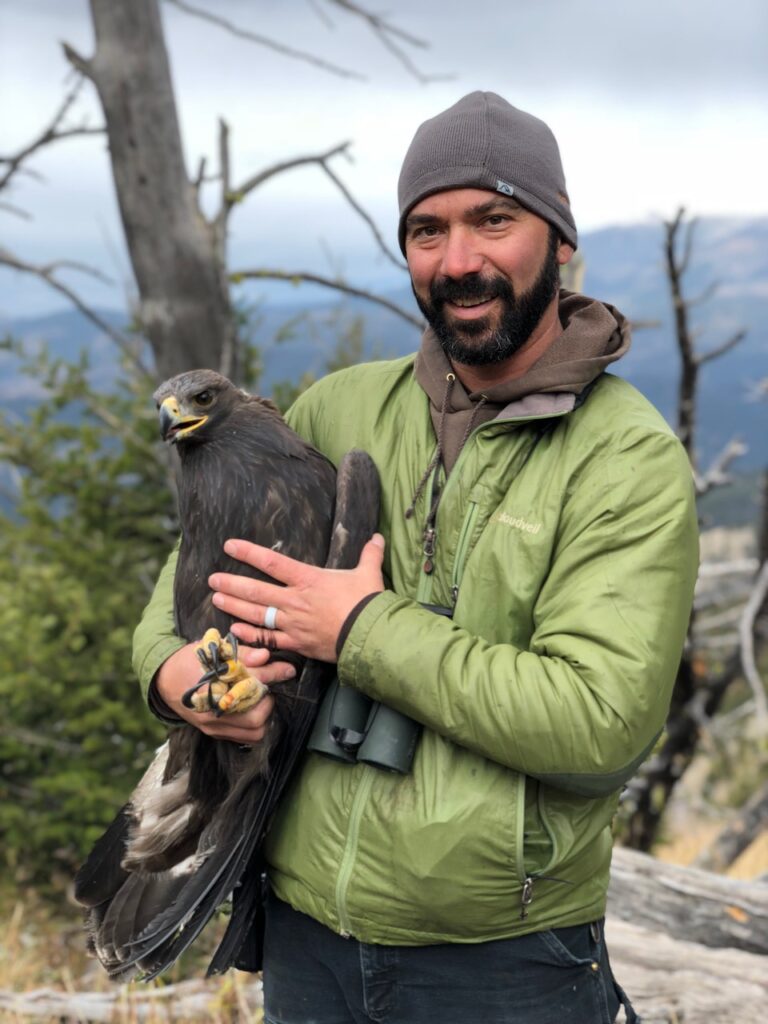New Online Tool Saving Eagles, Guiding Energy Development
RaptorMapper will help identify critical golden eagle habitat to prevent wind turbine-caused mortalities
- Published In: Other News & Features
- Last Updated: Jan 04, 2024

Bryan Bedrosian, researcher and project lead for the RaptorMapper decision support tool, is passionate about understanding the ways in which both migratory and year-round-resident golden eagles utilize habitats across Wyoming. The new online resource helps developers avoid particularly sensitive areas for the vulnerable eagles. (Courtesy photo from Teton Raptor Center)
By Melissa Thomasma
Special to the Wyoming Truth
Wind generates nearly one-third of Wyoming’s power, but the massive turbines impact certain species of birds. Now, a new tool is enhancing developers’ ability to strategically place new facilities to minimize the price tag for avian populations — and ultimately themselves.
Up to half a million birds are killed each year by wind turbines that spin up to 200 miles per hour, according to the U.S. Fish & Wildlife Service. Golden eagles are particularly vulnerable because they fly at the same elevation as the blades while hunting prey. RaptorMapper, the online decision support tool, allows developers to predict the potential impacts on golden eagles before finalizing plans.

As the nation’s demand for clean energy continues to grow, Wyoming presents tantalizing prospects: the state’s wind resources could, if fully developed, provide 47% of the country’s total power needs, University of Wyoming researchers estimate.
Bryan Bedrosian, project lead for RaptorMapper and researcher at the Teton Raptor Center in Jackson, said that pursuing the balance of renewable energy, economic growth and protection of eagles is at the heart of the collaborative effort. Team members included researchers from UW, Cal Poly Humboldt and Wyoming Game and Fish, as well as cartography experts from Gage Cartographics and Natural Resource Geospatial.
“We’re fortunate that all of the eagle researchers in North America agreed to share their data,” Bedrosian told the Wyoming Truth. “We wanted to take the complicated science and make it easily accessible for everybody, not only energy companies.”
While RaptorMapper may be helpful to those focused on future building plans, the energy industry has particular motivation to use the tool. In 2022, a subsidiary of NextEra Energy Resources was found guilty in federal court of violating the Migratory Bird Treaty Act when 150 birds, including golden eagles, were killed by wind turbines in Wyoming and New Mexico.
NextEra was sentenced to nearly $8 million in fines and restitution.
Why golden eagles?
When most Americans think of eagles, their mind leaps to the national bird. “Bald eagles are one of the best conservation success stories we have in the history of the United States,” Bedrosian said, noting the population of golden eagles is at best stable, but likely decreasing.

Half of North America’s 30,000 golden eagles live in the lower 48 states year-round, he said. The other half spend warmer months in Canada and Alaska, migrating to Wyoming when colder weather rolls in.
Another reason golden eagles are less understood is their overall shyness. Unlike bald eagles, Bedrosian said, golden eagles will give most human activity a wide berth if possible. This makes it tough to conduct research to understand their exact numbers and migration patterns.
Researchers beyond Wyoming are exploring ways to steer birds away from turbines, too. Though you’d expect to see one at a car dealership rather than a wind farm, researchers at Oregon State University have found success utilizing “air dancers” to spook birds and bats. A 2020 study in Norway discovered that painting turbine wings partially black can reduce bird deaths by up to 70%.
These efforts, along with projects like RaptorMapper, are the answer to expanding clean power while protecting eagles and other species, Bedrosian said.
“We live in Wyoming because of the wild spaces and wildlife; we should take pride in the fact that we have some of the best eagle populations in the world,” Bedrosian said. “This is an opportunity to safeguard them for future generations.”













